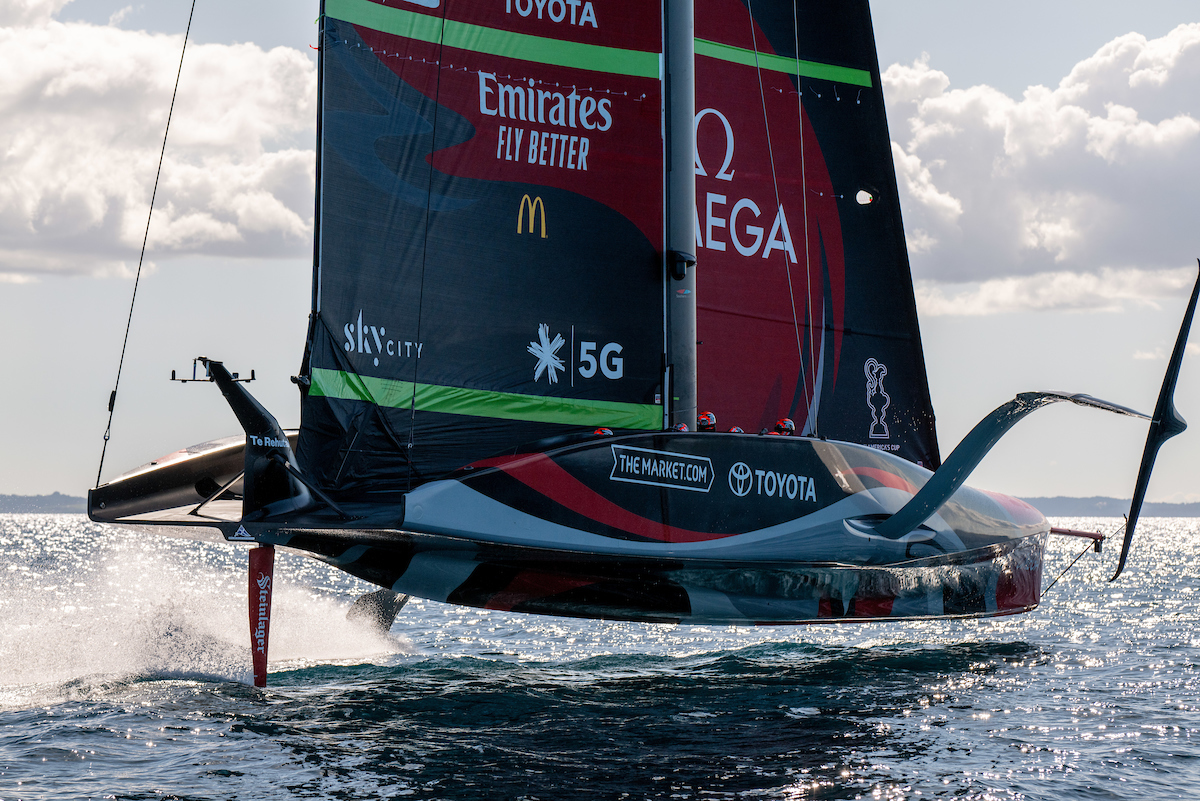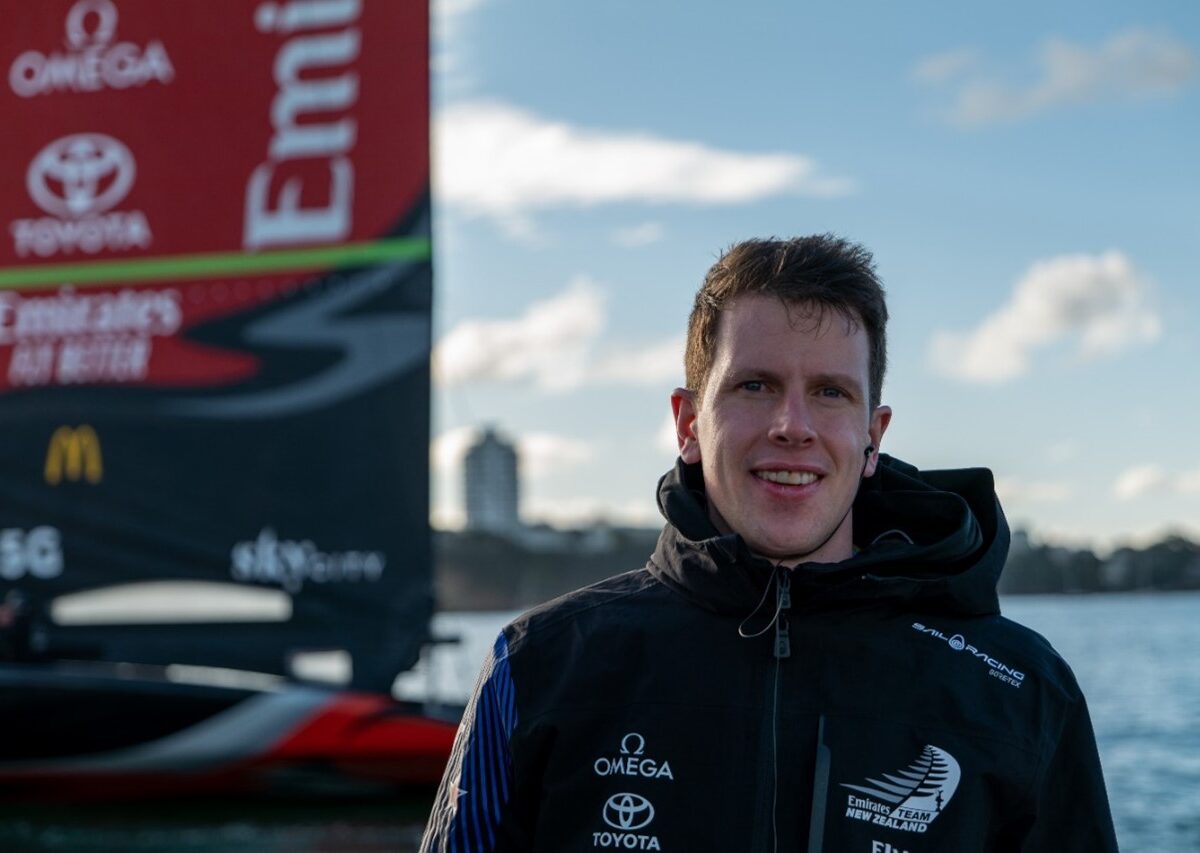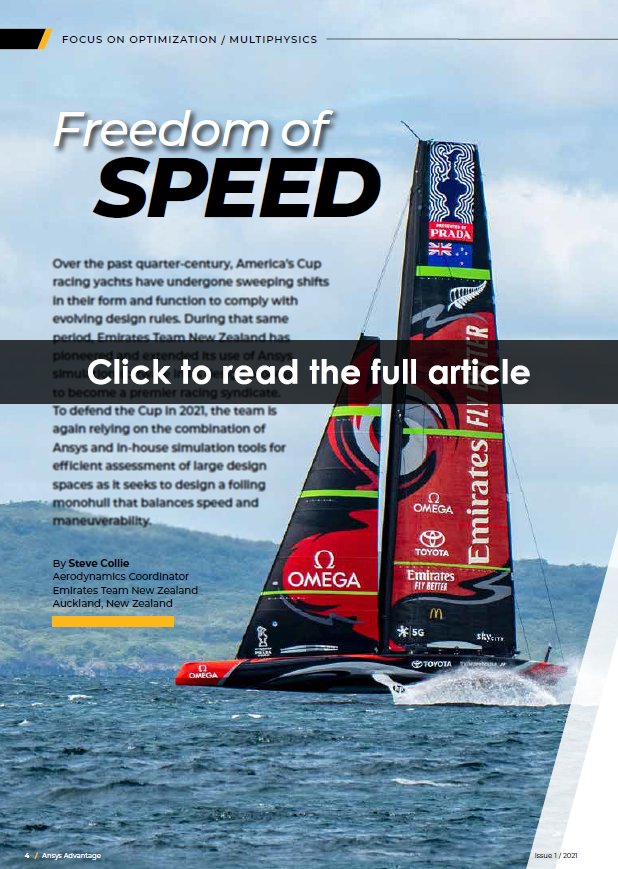We sat down for Q&A with Douglas Weber-Steinhaus, Senior Consulting Engineer from Ansys, to talk about the America’s Cup competition and his experiences working with Emirates Team New Zealand in Auckland during 2020 in the leadup to the 2021 America’s Cup which starts next week.

@LEAP: Douglas, tell us how you came to be working on-site at Emirates Team New Zealand in Auckland during 2020?
@Douglas: Emirates Team New Zealand asked our office for some support in composite analysis and I was lucky to get called up.
I joined composite FEA experts EVEN-Evolutionary Engineering AG in Switzerland in 2012. We were a close-partner of Ansys and the development site for Ansys Composite PrepPost (ACP) – Ansys’ dedicated lay-up modelling and analysis software. We joined the Ansys family in 2013. About seven years prior to that, the company had worked for a German America’s Cup team. To some extent, you could say that ACP was born out of the learnings of the 2007 America’s Cup. I think our team understands some of the unique composite requirements for this competition.
Emirates Team New Zealand has a long-standing relationship with LEAP and Ansys as a whole, although this focused mainly on CFD. After the America’s Cup in San Francisco, the team started to use Ansys for structural simulations as well. And our office had helped out: a colleague of mine supported Emirates Team New Zealand in building an analysis model for the wing in the 2017 America’s Cup.
Sporting competitions at the highest level are a fantastic way to test and showcase advances in technology. For this America’s Cup campaign, we proposed a collaboration with Emirates Team New Zealand to trial new developments in optimisation, which culminated in a 6-month on-site project in Auckland – and I was the lucky man to get the ticket. I was embedded in the Emirates Team New Zealand design office in Auckland for 6 months during 2020 with my main role involving composite FE analysis of the hull and rig using Ansys. I was very glad to be welcomed and treated as one of the team; it was truly an exciting time for myself both professionally and personally.
@LEAP: Can you describe some of the highlights of your time in Auckland?
@Douglas: From a global perspective, you couldn’t have picked a better place for a secondment than New Zealand in 2020. It was obviously a unique time to be working abroad during the pandemic, yet I was very fortunate to find myself in a country that was able to leverage its unique advantages to keep things under control. Now I am back in Europe and I am watching, with great envy, how everyone can go about their daily lives in NZ – small outbreaks notwithstanding.
In NZ, it was clear that people felt a sense of achievement in stopping the spread of COVID-19.
At a personal level, I really enjoy cycling and I was glad to have a bike down there. It was my ticket to freedom during the initial lockdown in March/April. I managed to get down to the South Island and enjoy the amazing scenery there. Also, seeing the Blues play rugby in front of 35,000 spectators at Eden Park was brilliant. Especially at a time when the rest of the world was sitting at home itching to see live sports!
A professional highlight for me was watching Emirates Team New Zealand’s Boat 1 out on the water: being out on the chase boat – seeing how fast the AC75 went, directly feeling the wind speed and the acceleration as the chase boat was trying to keep up. I’ve seen a lot of footage of the AC75s – 3D models and pictures – but witnessing it in full sail was something special. I got to see manoeuvres up close, listen in to communications with the sailing team, and see live tracking of sensor data from boat. I was able to see how close to the design loads they were sailing. As a mechanical engineer, it was thrilling to get direct feedback from the same parts on which we’d spent many months running simulations. At the time, I was also impressed by how composed the team was during these high-pressure manoeuvres, and how smoothly the communications operate.
@LEAP: After spending time embedded with the team, what observations did you make about Emirates Team New Zealand‘s design team and the innovation that was on display?
@Douglas: I was impressed by how close-knit the entire team of Emirates Team New Zealand is – everyone is based together at the Viaduct (except for the boat builders, and the boat yard is only a quick trip across town). The design team sits right next to the sailors and above the boat shed. There was good chat between the groups which made for a great working environment. With Steinlager as a sponsor, the Friday beers were always covered.
On the technical side, the availability and wealth of data was remarkable. Emirates Team New Zealand has invested in making sure that the sailing performance data is available to everyone in a customisable web dashboard. Whether you’re in the office or on the chase boat, the designers can track things like wind speeds, boat settings, sensor data over time. Video footage is streamed in the office and can be replayed at a later stage. As engineers, we could easily get together to replay key events – for example, to determine the biggest loads on the structure and review how realistic a design load scenario was from real-world data out on the water. I can tell you that a strain gauge trace really comes to life when you watch it alongside a synchronised video of the yacht manoeuvre!
Simulation is a key to how the team operates – guys like Steve Collie have decades of experience in using Ansys and have great confidence in the predictions. Emirates Team New Zealand has a simulator – their Velocity Prediction Program (VPP) which has been described in the current Ansys Advantage article (coming very soon!) – that uses simulation data to replicate how a boat would sail on the water. Datasets of hundreds or more design points, accounting for variables such as wind speed, wind direction, boat attitude etc. help the sailors virtually race each boat-sail-foil configuration in the simulator. The boat that wins the America’s Cup need not be the boat with the best straight-line speed; it’s the lap time that counts. The ocean and weather are so variable that comparing the performance of foil design A over design B across a wind range is near to impossible. But using the simulator, this comparison is repeatable and relatively straight forward. Hence, simulation is a vital tool to many aspects of the boat design and performance comparison.

Given my background, it was great to see how the structural engineers had a good methodology for modelling the entire hull in ACP – using global as well as detailed submodels.
Whilst Emirates Team New Zealand is a high-tech team in many respects, it was interesting for me to see how pragmatic they can be when tackling certain design details – I felt they have achieved a healthy balance between trusting simulation results, doing the odd sense checks & really investing in gathering lots of simulation data. Also, they know when to not overcomplicate things when it makes sense to trust their own learned experience.
@LEAP: How do the rule changes limiting wind tunnel/water tow-tank testing change the design approach for an America’s Cup team?
@Douglas: It’s hard for me to say – I don’t have any personal experience of how much tank and wind tunnel testing was done in previous editions of the America’s Cup. Equally, I cannot say how much testing teams would have wanted to do if they were allowed.
I think the AC75 class rule encourages teams to do design exploration in the virtual realm. Physical tests can be quite time consuming and expensive. I believe this rule was an attempt at keeping the design costs at bay and fair for all teams involved.
In this edition of the America’s Cup, no wind tunnel or tow tank testing is allowed. The teams could build two full size boats. Tests boats were not banned but they had to be using boats that were less than 12 metres, so about half the length of an AC75. Emirates Team New Zealand built a smaller test boat which provided a great testing platform. Simulation gave the team confidence not only in design before they went onto the boat, but also in scaling results from the test boat to the full-sized boat.
The engineers at Emirates Team New Zealand struck me as believers in simulation driven product development. As they were involved in the writing of the class rule, perhaps you could infer that they had confidence in their simulation capabilities and considered the use of wind tunnel and tow tank testing to no longer be a necessity.
@LEAP: What have you observed in the races held so far and, based on these observations, what technical factors do you think will help decide the winning boat in March 2021?
@Douglas: There have been some nail-biting races in the lead-up to the America’s Cup and I’m glad that the boats and race format have created an exciting spectacle. Each team looked dominant in more than one race so far, but performance strongly depended on the wind conditions. To win, you need to be fast and fast across a range of conditions. All challenger teams have improved their speed since the first racing in December and Luna Rossa came out strongest in the Prada Cup final. The development clearly has not stopped. In the races ahead of Christmas, Emirates Team New Zealand sailed a fast boat but it looked there was still plenty of room to improve in manoeuvres. I’m expecting Emirates Team New Zealand has kept pace with the development of the other teams during this last 2 months.
The America’s Cup competition is all about striking the right balance on timing and available resources – the winner will be the one who shows up with the fastest boat and crew on race day, the performance in the lead-up doesn’t matter once you’re there. The team that stays ahead in improving their boat performance until the final race has a clear advantage in winning the America’s Cup. Many design decisions were locked in a long time ago. You don’t want to be in position where part X is limiting the performance but there is nothing you can do about it with the time remaining.
To win, you also need little bit of luck – there is endless list of things that could go wrong. Success will be a combination of hard work, skill and good decisions over the course of a 3-year campaign. From the admin team, the boat buildings, the cooks, the designers & engineers, through to the sailors – everyone has an important role to play.
Rules dictate that teams must declare their set of foils six days before the 1st race – so it is entirely possible that you might end up choosing foils that are less performant in the eventual weather conditions than your competitor. Even with Emirates Team New Zealand’s local knowledge, it’s a stretch to predict what the wind will be 6 if not 15 days in advance.
I look forward to exciting racing in Auckland in March (albeit from afar), as I’m sure many engineers and sailors around the world will be too!
For more info and to watch the racing during March 2021, visit https://www.americascup.com/
You can also read the latest Ansys Advantage article by Steve Collie from Emirates Team New Zealand by clicking here.





